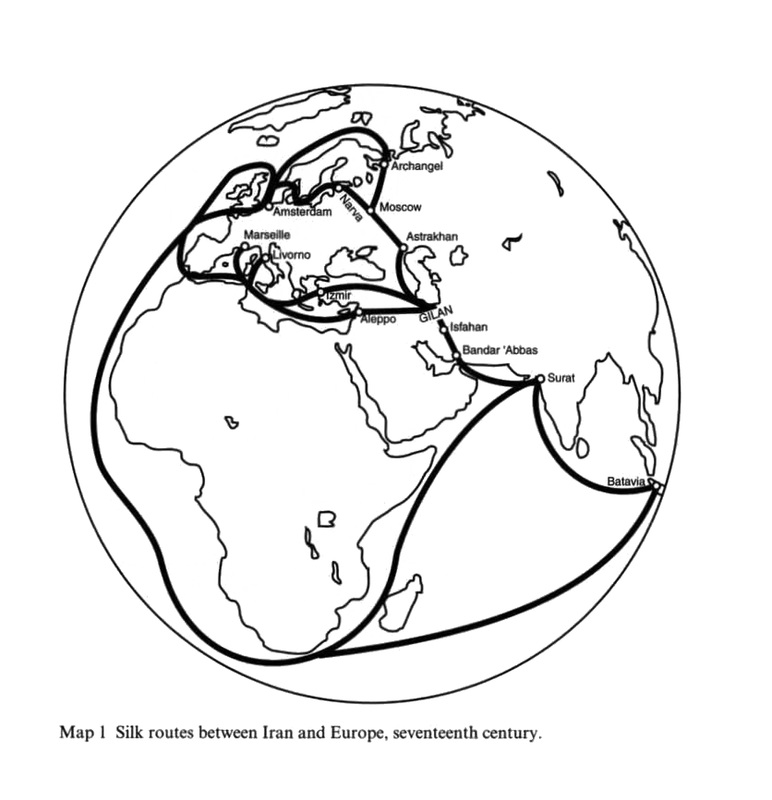"the Swedes in 1679 decided to establish diplomatic relations with Iran. The man chosen to lead the delegation dispatched for that purpose, Ludvig Fabritius, was a Brazilian-born Dutchman who had made a career in the Russian military. Captured during the Sten' ka Razin rebellion in 1670, he had managed to escape to Iran, spending some time in Isfahan."
|
from: Rudolph P.Matthee, The Politics of Trade in Safavid Iran: Silk for Silver, 1600-1730. (Cambridge, UK: Cambridge University Press, 1999): 197.
0 Comments
"[In Humanities] the enterprise is one, the specialties many — but all are part and parcel of a common intellectual endeavor: to further our understanding of ourselves." "The primary method for the study of humans through the investigation of their cultural products is interpretation." "the understanding of humans by humans is as important an endeavor as understanding the physics of distant star systems. I don't think that studying the humanities necessarily improves people; in fact, it manifestly doesn't (just think about all those cultured and educated slave-holders and Nazis). But I am sure that aggregating knowledge about ourselves and all of our possible ways of living is vital for our continued future as a global species."
Thanks to Arijit for Sharing this:
Huguenots, British silk industry, and The Middle Eastern refugees of the twenty first century10/25/2015 If the ME refugees were Huguenots of the fifteenth century, what it would be the silk industry? James I was the first person to try seriously to establish a silk industry in England. Mulberries had been known at the English Court for over four hundred years before James ascended the throne in 1603, so one part of the silk technology - the mulberry tree introduced from the Continent - was already present in England . But what of the little 'worms'? Taken from: James Feltwell, The story of silk, (Alan Sutton, Stroud, UK, 1990), 16-17.
This just made my day!
This is a nice example of efforts in macro-scale digital humanities visualization! leaded by Maximilian Schich:
Richard Leson just introduced me the fantastic and well-known Morgan Crusader Bible today which is also known as the Morgan Picture Bible, the Maciejowski Bible, and the Shah ‘Abbas Bible. Such a blast! It includes Old Testament miniatures with Latin, Persian, and Judeo-Persian inscriptions!
Here is a brief history of the manuscript by the Morgan Library and Museum: The Crusader Bible was originally a picture book. Subsequent owners, however, felt a need to have the subjects identified. After the death of Louis IX (1270), the manuscript went to Italy, where the Latin inscriptions were added in the fourteenth century. Fourteen of the scenes were incorrectly identified. After Shah ‘Abbas received the book in Isfahan as a diplomatic gift in 1608, he had the Persian inscriptions added. After Afghans sacked Isfahan and its Royal Library in 1722, the book fell into the hands of a Persian-speaking Jew, who added the Judeo-Persian inscriptions. These inscriptions did not depend upon each other, and only the Judeo-Persian inscription correctly identified the episode in which Jephthah agreed to sacrifice the first person who met him on his victorious return to Maspha, who was his only daughter (fol. 13). The Latin inscription connected the episode with Gideon, and the Persian inscription mistakenly said it was Gideon’s daughter. English translations of all the inscriptions can be found in this online exhibition.
You can explore the book here:
|
AuthorI am Nader Sayadi, a researcher and educator in architecture who studies and teaches built environment and material culture history. I am also an architectural designer and historic preservationist. This is where I would like to share my thoughts about my interests in the related fields. Archives
September 2017
CategoriesMy places of Interest
|

 RSS Feed
RSS Feed
